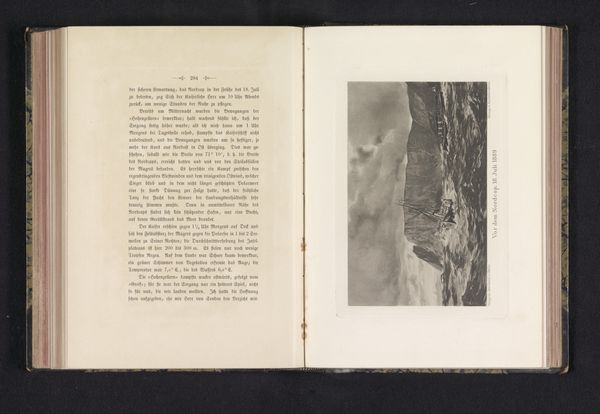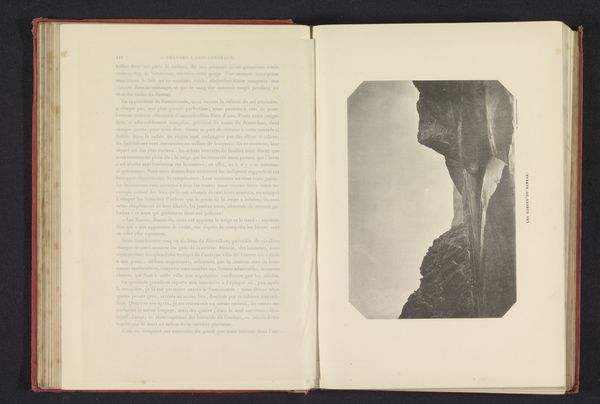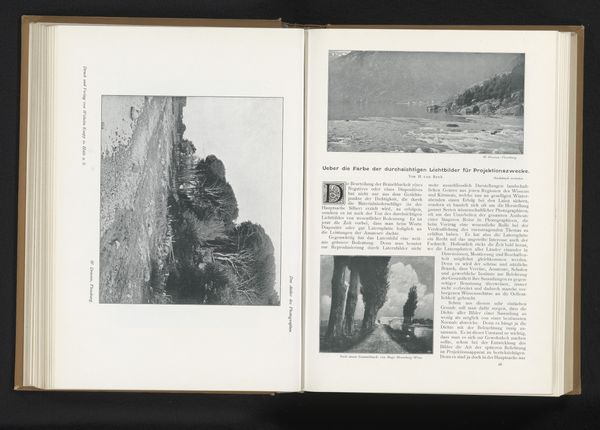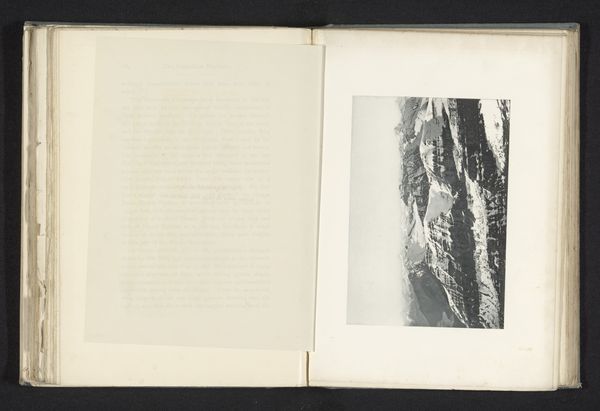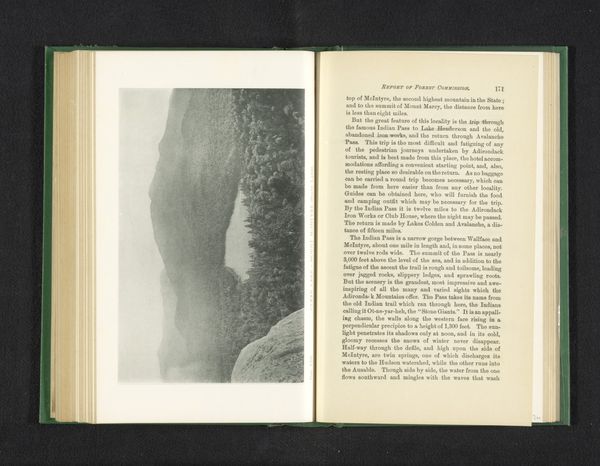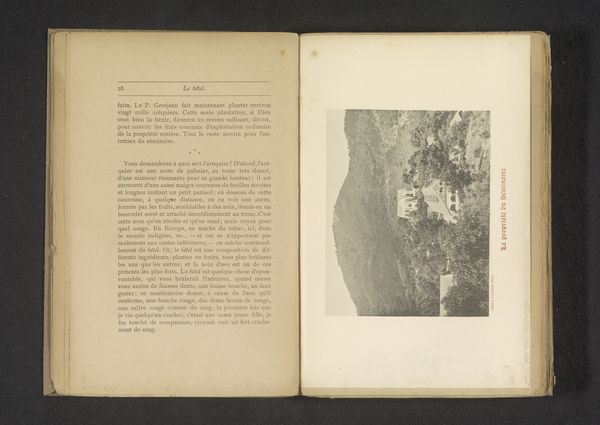
print, photography, gelatin-silver-print
#
aged paper
#
paper non-digital material
#
paperlike
# print
#
landscape
#
personal journal design
#
photography
#
book mockup
#
mountain
#
gelatin-silver-print
#
thick font
#
publication mockup
#
letter paper
#
historical font
#
publication design
Dimensions: height 129 mm, width 174 mm
Copyright: Rijks Museum: Open Domain
Curator: Before us, we see an intriguing spread from an old publication, featuring a gelatin silver print titled "Gezicht op de Kaukasus," dating from before 1885. Editor: My immediate impression is the sheer verticality! The photograph on the right seems to show an imposing rock face or mountainside that just dominates the space, exuding a raw, almost sublime power. Curator: Yes, the mountainscape commands attention, but it’s vital to consider the book as a whole. How does the printed text on the facing page contextualize the photograph? Whose narrative are we invited to consider through the layout? Editor: I see your point. The placement definitely invites a kind of dialogue between image and text, something that goes beyond a mere illustration. Is it meant to legitimize or perhaps romanticize certain views of the Caucasus, tying into colonial narratives or political power structures of the time? Curator: Precisely. Think of the historical moment. Tsarist Russia was expanding its influence in the Caucasus throughout the 19th century. This image could easily function as visual propaganda, reinforcing a specific idea of the landscape to support political aims. Or challenge the viewers perspective through an image of the foreign and unknown. Editor: The absence of any human figure amplifies the overwhelming feeling of nature's immensity. It raises a few important questions about how such landscape images shape our sense of belonging, or, perhaps more problematically, alienation. Who has access to such wild places, and whose stories get left out when we celebrate only the monumental? Curator: Indeed. These photographs weren’t created in a vacuum. We need to unpack the social dynamics implicit in its creation and consumption to understand its broader historical role. Editor: Examining art through the lens of both landscape and social discourse opens us up to powerful reflections, no? This piece certainly leaves you to reflect on much more than first meets the eye.
Comments
No comments
Be the first to comment and join the conversation on the ultimate creative platform.

